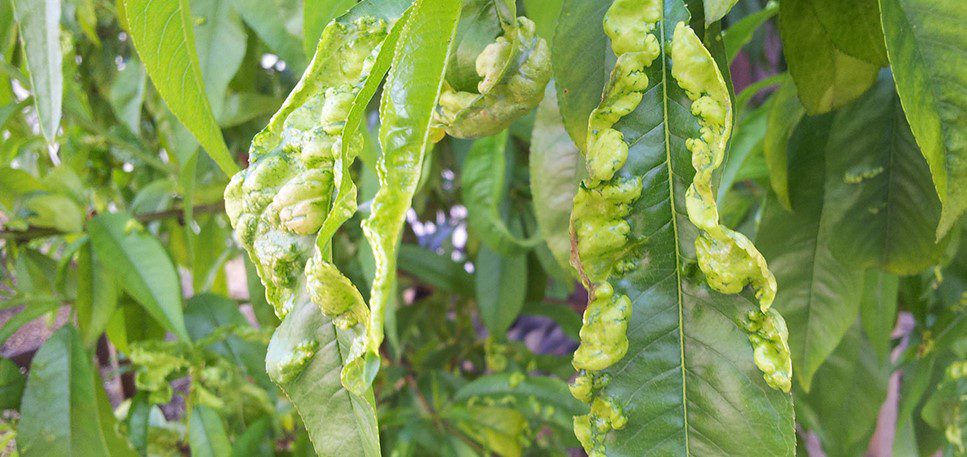An important garden task in winter and early spring is spraying peaches and nectarines to prevent curly leaf. The spraying needs to be done before bud break, and should be done at least twice.Curly leaf is caused by a fungus, Taphrina deformans, that infects young leaves causing them to become deformed and discolored. The leaves blister with orange and yellow colouring. Occasionally, fruit will blisters too and will fall. Shoots can also be affected and will appear thickened, distorted and may ooze gum. This can be more than just unsightly, particularly on young trees where it can stunt their growth badly. Left untreated, leaf curl will continue to affect the tree and get progressively worse year after year. Untreated, it can cause dieback of new shoots, early fruit drop, reduction of vigour, and eventually death of the tree. Weather conditions are a factor, with the fungus enjoying a cool, wet spring. However, you may avoid it one season only to become infected the next.Prevention is the way to go. Prune trees to an open vase shape to encourage air flow; Apply a preventative spray; And, rake up and dispose of fallen leaves.
What to use:
Copper-based fungicides are an effective prevention controls for leaf curl in peaches and nectarines. Don’t forget any ornamentals in this family as they can be similarly affected by curly leaf. (although less common). Apricots and almonds may also be susceptible.
When and How to use:
Mix (only what you need) in a spray bottle, according to the directions on the packaging. Then, you will want to spray, ensuring good coverage:
- In autumn, at leaf fall.
- Immediately before budswell at the late dormant stage.
- And, again, about 1 week later at budburst.
Timing is key as disease control options are limited after bud-break. The sprays will burn leaves that have already emerged. You can continue to help protect next year’s growth with a clean-up to remove materials that may host spores (that can survive through summer) and contribute to environmental conditions where the fungus can thrive.

